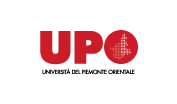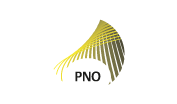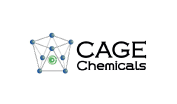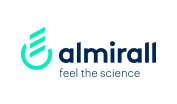The UPO is an Italian State University established in 1998. It has seven Departments and one Medical School, about 13,000 students, 385 professors/researchers, 314 employees, about 100 PhD students and 100 post-doc positions.
The recent national evaluation of research quality (2016) ranks the UPO among the top 10 of the medium-size Italian Universities for scientific research.
The UPO is partner of several European research and education programmes; at present it is involved in 20 FP7 Projects (1 ERC grants) and 8 H2020 Projects (1 as Coordinator). The UPO‘s crucial aim is to strengthen the integration of the community in national and international networks by promoting scientific and cultural exchanges. The UPO has been acknowledged as a competent partner of the European Food Safety Authority (EFSA), the European Union body for risk assessment regarding food safety.
Role in the project
The group involved in MULTI2HYCAT is at the top level of research quality in the physical-chemistry field. Besides managing the project (WP1), the UPO will lead the research activity devoted to the physico-chemical characterisation and theoretical modeling of new hybrid catalytic materials (WP4) . The experimental and theoretical characterisation will effectively support the synthetic pathway design of the organic/inorganic precursors (WP2) and will address the hybrid catalyst preparation (WP3) in the view of the optimisation of catalytic active sites. Moreover, the same characterisation tools will be useful to elucidate the reaction mechanism involved in catalytic processes (WP5, WP6, and WP7).
The UOS is a global centre for excellence in research and education and a founding member of the Russell Group. We have gained prestigious recognition for our successes and history of world-changing achievements.
- Placed 14th overall and 9th amongst the UK’s 24 leading, research-intensive universities that form the Russell Group in the Times Higher Education Table of Tables 2016. Funding from Engineering and Physical Sciences Research Council (EPSRC) exceeded £200m in 2015, placing UOS sixth in the UK for total value of grants.
- 100 per cent of Chemistry’s research has been rated world leading or internationally excellent (REF2014).
- Students report high levels of satisfaction with the courses. In the National Student Survey 2016 86% of students were satisfied with the overall quality of their course.
- At UOS we have more than 23,500 current students, including 16,000 undergraduates and 7000 postgraduates and researchers.
- Hosts the UK’s only National Crystallographic Service, a multimillion pound facility, providing key structural insights into new molecules and materials. Supporting and developing research excellence in chemistry, biochemistry, and the physical sciences.
- The Chemistry department, which is part of the Faculty of Natural and Environmental Sciences, regularly features on the top of the league table for government funding awarded through the Engineering and Physical Sciences Research Council (EPSRC). Chemistry is ranked 4th in the UK in the Academic Ranking of World Universities (2014, 2015) and in the top 10 of the Nature Index (2016) with an annual turnover of ~ £19 million.
Role in the project
The rational design of exemplar reactions that fully maximise the interaction of molecules with 3D biological systems and attempt to bridge the gap between homogeneous and heterogeneous catalysis in the asymmetric synthesis of fine-chemicals and pharmaceuticals will be the main focus of the UOS. Establishing proof-of-concept catalytic studies with a view to probing catalytic activity, selectivity, lifetimes, stability and mechanistic implications in C-C bond-forming reactions and in the application of double C-H activation. Monitoring these transformations (in situ) in a time-resolved fashion, with a view to mapping the interactions of the active centres with the hierarchical scaffold and designing molecular tools for studying nanoconfinement effects and associated mechanisms (quantum chemical, spectroscopic and calorimetric) will be our main focus.
SOL is a Belgian chemical company founded in 1863 by Ernest and Alfred Solvay to produce sodium carbonate by the so-called SOL process (―ammonia-soda‖). From 1872, the company expanded to England, Germany, Russia and USA to become the largest world manufacturer of sodium carbonate by 1900 and the first multinational by 1913. From then on, SOL started a diversification of its activities into two major sectors of activity: chemicals and plastics. With more than 120 sites, SOL employs 30,900 people in 53 countries. The total budget allocated to R&D activities accounted for €277 million.
From its very beginning, research and innovation have been at the core of SOL activities with a strong commitment to sustainable development. A strategic innovation platform on Green Chemistry was created in 2012 boosting the ratio of renewable raw materials used in the group (12.5% in 2013), which has been consolidated in the new R&I policy of SOL until the horizon 2020. SOL has launched a series of ambitious R&D programs (STEP H2020) in strong connection with academia focusing on the synthesis of intermediates issued from bio-based platform molecules (e.g., HMF) for preparing biobased fine chemicals and polymers. To this aim, in 2011, SOL founded together with CNRS the Eco-Efficient Products and Processes Laboratory (E2P2L, UMI 3464, www.e2p2l.com) in Shanghai, regrouping the Corporate R&I activities of the group in Catalysis and Sustainable Chemistry.
Role in the project
Besides assessing in the first months of the project the final requirements of the hybrid catalysts to be developed within MULTI2HYCAT, SOL will provide by E2P2L an assessment of the industrial validation in pre-pilot reactors of the best developed reactions. Moreover, SOL will carry out a complete techno-economical and Life Cycle Assessment (LCA) study for the best formulations.
Besides assessing in the first months of the project the final requirements of the hybrid catalysts to be developed within MULTI2HYCAT, SOL will provide an industrial validation in pre-pilot reactors for the most promising reactions. Moreover, SOL will carry out a complete technoeconomical and Life Cycle Assessment (LCA) study and toxicity assessment for the best catalytic formulations.
PNO, established in 1984, is specialised in Grants and Innovation Management, providing support services to private and public organisations in Innovation processes, Technology Transfer, IT solutions and funding for research, development and innovation. PNO is a European group, made up of a pool of around 250 professionals across 12 Member States, including scientists, engineers, consultants, a Brussels policy advisory service, as well as financial and legal experts, with consolidated experience in innovation processes and funding in international working environments. The company has the proven capability to link innovation suppliers and adopters from a unique Europe-wide client network in multiple sectors, using advanced methodologies, ICT solutions and proprietary on-line networking. PNO has its own community building, management and dissemination tools, the core one being Innovation Place © www.innovationplace.eu . PNO supports over 2,000 clients throughout Europe, annually developing over 120 European consortia, funding proposals, and fostering their successful implementation in many technology domains through management, technology intelligence, exploitation, and dissemination services. PNO specialises in the defining of R&D strategies, procurement of national and European public support for innovation activities, partner identification and brokering for the purpose of technology transfer & technology exploitation.
PNO is involved as advisor in roadmap development for the chemical industry towards Public Private Partnership Programmes in HORIZON 2020, with an important focus on European networking and incubator projects with various smart specialisation regions which will provide a real life experience base for the project.
Role in the project
PNO will be the leader of WP7 (Dissemination and Exploitation) and will be involved in the following activities:
- Stakeholders analysis; Dissemination strategy (incl. logo, project identity, dissemination material).
- Dissemination/Communication, including organisation of projects event (scientific and industrial), participation in international conferences/fairs, publications on high-level journals, website, etc.
- Exploitation plan (incl. support to exploitation management and workshops).
- Business Plan, incl. market analysis survey (with industries end user), preliminary business model and financial forecasts.
CSIC is the largest public multidisciplinary research organisation in Spain and the third in Europe, with more than 10,000 employees, among these 3,200 scientists and about 3,800 pre- and postdoctoral researchers. The CSIC is a join research centre founded in 1990 by CSIC and the Universidad Politécnica de Valencia. It is a worldwide recognised institute that integrates catalysis and materials science through a multidisciplinary approach. Its staff represents a highly qualified multidisciplinary team of specialists in synthesis and characterisation of catalysts, as well as experts in determining catalytic activity of catalysts in model reactions and reactions of industrial interest (approximately 250 qualified professionals are currently working in the centre). During the last ten years, CSIC has generated over 150 application patents, around 80 of which have directly been developed with private companies. Remarkably, five of them are being commercially exploited and two are currently in demonstration plant.
Role in the project
Inside the project MULTI2HYCAT, the CSIC‘s research activities will be focused on the preparation and advanced characterisation of porous solids containing different active functions in the catalyst’s framework. The main challenge in catalyst synthesis task will be to place the active sites in very specific geometrical distribution to boost the catalytic activity and the selectivity towards the desired product of the final catalyst. The CSIC‘s tasks will be focused on the stabilisation of different active sites in specific
framework positions of the porous materials, separated at controlled molecular distances, facilitating their role as catalytic centres involved in the individual steps of the consecutive process, and making possible their reactivation and reuse in successive reaction cycles.
The CNRS is the largest public-funded research organisation in France and the largest fundamental research organisation in Europe. The CNRS employs 32,000 permanent employees (tenured researchers, engineers and administrative staff) and 6,000 temporary workers. The CNRS is divided into 10 institutes covering the different fields of knowledge, among which the National Institute of Chemistry (INC).
CNRS has created about 30 international laboratories, also called Unites Mixtes Internationales (UMI), in partnership with leading European, American and Asian universities and multinational companies such as Solvay.
The Eco-Efficient Products and Processes Laboratory (E2P2L, UMI 3464, www.e2p2l.com) is an international joint laboratory affiliated to CNRS and Rhodia Operations (Solvay affiliate) and located at Solvay R&D centre in Shanghai (China). In the framework of MULTI2HYCAT project, both CNRS and Solvay will act on behalf of E2P2L. E2P2L strives to develop innovative eco-efficient products and environmental benign processes capable of reducing our dependence on oil and fossil resources.
Role in the project
E2P2L (CNRS) will assess the properties of the different multi-site catalysts developed by CSIC and UOS at a lab scale for carrying out cascade reactions for the synthesis of fine and specialty chemicals. The feedback from this analysis will allow further refining and optimisation of the catalyst structure and spatial location of the active sites to promote the activity and selectivity towards a desired product.
E2P2L (CNRS) will be the leader of WP6 and will assess the properties of the different tailordesigned multi-site catalysts developed by CSIC and UOS at lab scale for carrying out cascade reactions for the synthesis of commodity and fine chemicals starting from biobased reagents and avoiding salt formation as undesired by-products. Specific examples will include the synthesis of ligands, surfactants and monomers for polyamides such as hexamethylenediamine (HMDA) and adipic acid.
CAGE is a small company established in 2006 by a group of researchers with a strong expertise in the design and synthesis of chemicals. The core business originally involved the development of research chemicals for molecular imaging application, focusing on chelating agents for metal ions of diagnostic/therapeutic interest and (bio)conjugation. The activity was soon expanded to match the growing demand for ―custom synthesis‖ solutions and process chemistry development, for customers mainly, but not exclusively, represented by pharma companies.
CAGE provides innovative products and custom synthesis with a staff skilled in the design and development of chemicals and the corresponding processes. The mission of CAGE is to meet the market demand for research chemicals and offering a comprehensive service, including molecular design, development of efficient synthetic access and analytical characterisation of the final product.
Role in the project
CAGE, as WP2 leader, will support the preparation of bridged silsesquioxanes, disilanes, specifically functionalised organosiloxanes, organic-inorganic precursors as starting monomers to synthesise the multi-functional hybrid materials, from lab-scale synthesis to the final scale-up of the suitable monomers in enough amount to synthesise around 20-50 g of final catalyst.
ALM is a global pharmaceutical company based in Barcelona dedicated to providing valuable medicines and medical devices through our R&D, agreements and alliances. A consolidated growth allows us to devote our talent and efforts towards specialty areas and particularly to further grow as a leading Dermatology player. ALM’s products portfolio is marketed through 13 affiliates operating in 21 countries in Europe, as well as in the US, and through agreements with strategic partners in over 70 countries on the 5 continents.
R&D has been part of ALM’s DNA for over 40 years, as reflected by our commitment to the development of new drugs that will help treat illnesses in the future.
ALM covers all phases of R&D and we have a wide network of partnerships and international agreements with other companies, as well as with key academic institutions to create synergies and accomplish our goals.The company has proven Discovery, Development and Regulatory track record, capable of identifying and moving compounds from target to market based on ALM’s expertise in dermatological diseases, drug discovery and development, drug delivery, formulability, analytical methodologies, and regulatory, among others.
Role in the project
ALM will be the leader of WP7 and will assess the properties of the different multi-site catalysts developed in WP3 and pre-screened in WP5 for carrying out cascade reactions for the synthesis of key building blocks for pharmaceutical active compounds for the treatment of dermatological inflammatory diseases.
Moreover, in WP8 ALM will provide i) an assessment of the industrial validation in pre-pilot reactors of the best reactions evaluated in WP7 and ii) a complete techno-economical and Life Cycle Assessment (LCA) study to evaluate the environmental footprint of the catalyst production processes and reactions including a toxicity assessment.







